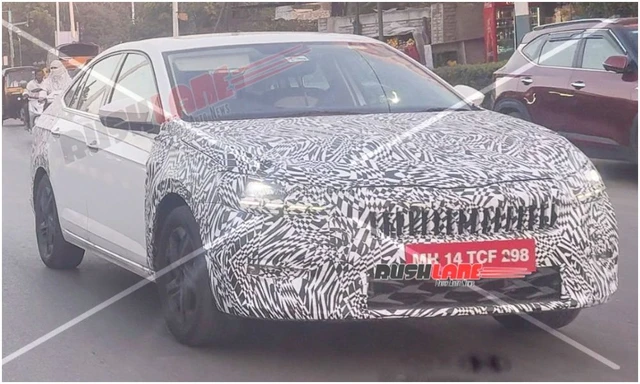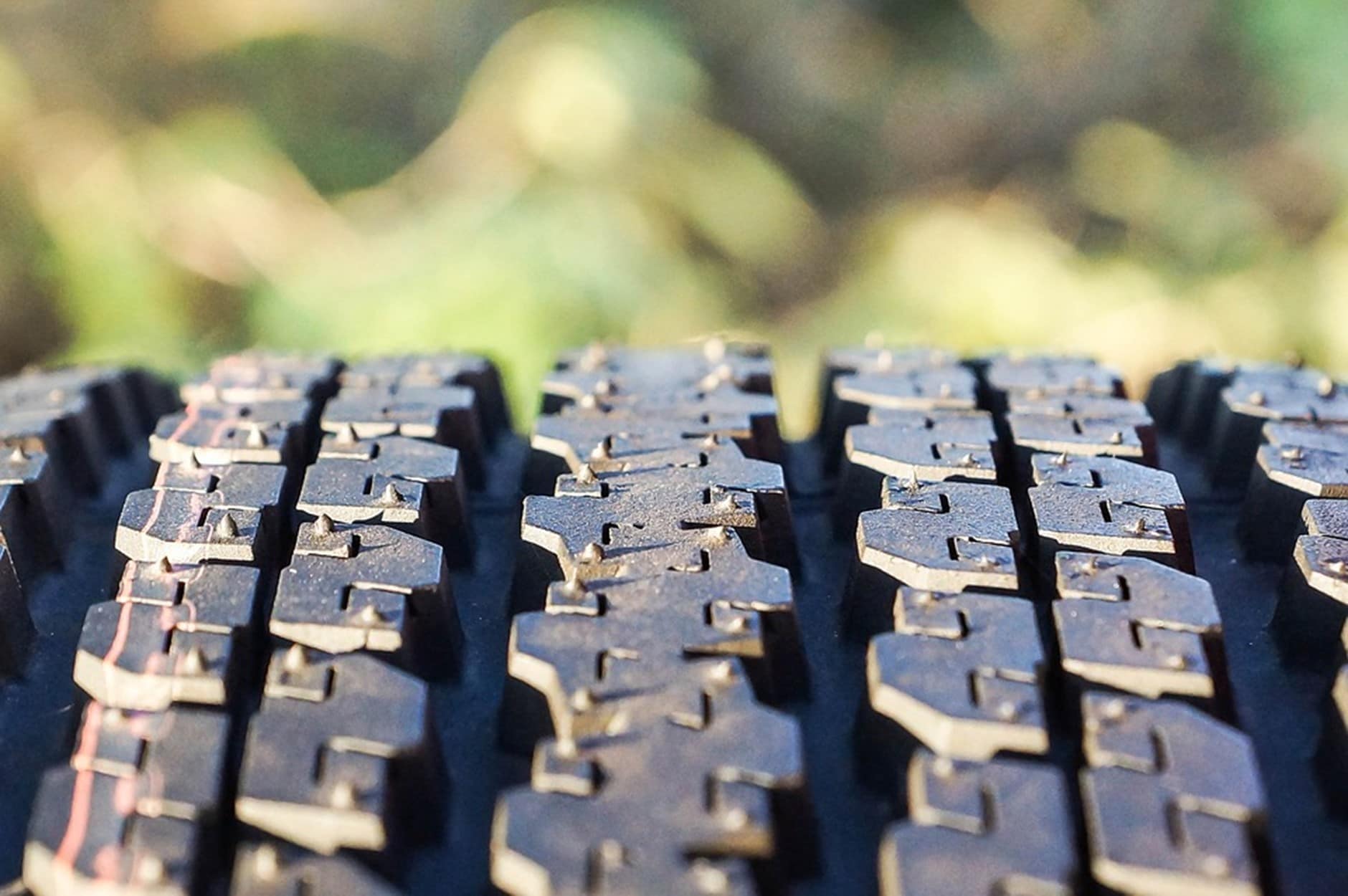Advantages of Tubeless Tyres

Since its invention, the tubeless tyre has been a revelation in the automotive industry as it helps mitigate or at least lower the probability of some of the aforementioned issues. Here's a look at how tubeless technology is a huge improvement over older tube-type tyres.
Safety
When a pneumatic tyre goes over a sharp object, the intrusion can pop the tube that lies within the outer rubber casing. The tube plays the most important part of keeping the tyre in shape and once it's pierced, the pressurized air within it air escapes almost instantly and at a rapid rate. This sudden drop in pressure can result in the driver losing control over the vehicle which, at higher speeds, can result in a bad road accident.
Tubeless tyres function without the need of a separate tube within the tyre casing. The rubber tyre itself forms an airtight seal around the rim on which it's mounted. To withstand the high pressure of the air inside, the edges (or 'beads') of tubeless tyres are enforced with steel wires that press up against the rim upon proper inflation thereby preventing the air within from escaping. The air valve used to inflate such tyres, is fixed onto the rim itself as it allows air to be pumped directly into the space between the tyre and rim. By not having a tube, if a sharp object were to get stuck in a tubeless tyre, the air would escape at a much slower rate allowing the driver ample time to slow down and pull up safely on the side of the road or in the case of a small puncture, drive to the nearest garage to get the tyre fixed. Here's a look at some of the major advantages of tubeless tyre technology.
Performance
By doing away with the added mass of an inner rubber tube, tubeless tyres weigh much lesser than pneumatic ones. This helps keep the gross weight of the car down and allows for better driving dynamics. The car handles better and feels lighter, thereby giving the driver a much more connected and enjoyable driving experience.
Tubeless tyres also have a lower rolling resistance than their pneumatic equivalents because of their lightness. This improves the engine's efficiency as the car is able to cover an equivalent distance with lesser strain on the engine. They also don't heat up or vibrate as much as pneumatic tyres which helps reduce NVH levels within the cabin.
Maintenance
A tubeless tyre naturally has lesser components. This means that repairs and upkeep are both simple and relatively cost effective. In the case of a puncture, all one has to do is separate the tyre from the rim, find the puncture spot on the inside of the tyre and patch it up by first plugging the hole with a puncture strip and then sealing it by using rubber cement. Finally, re-inflate the tyre to its rated pressure and make sure that the puncture is sealed properly. Tubeless tyre repair kits are easily available and can be found at most tyre shops.
Also Read: How To Change A Punctured Tyre
Durability
Tubeless tyres also happen to be much more durable than pneumatic ones. This makes them more convenient to live with as they don't require too much attention, last much longer, and are easy on the pocket. They are also less prone to getting seriously damaged if driven on in a punctured state. The slow rate of air loss in a flat tubeless tyre allows the car to be driven over short distances without running the risk of physically damaging the tyre as the only component that may get damaged is the air valve, that too if only if the tyre is completely flat.
Trending News
Latest News
 car&bike Team | Dec 14, 2025Top-Spec Tata Sierra Accomplished, Accomplished+ Prices RevealedRegardless of the powertrain combination chosen, all Tata Sierra Accomplished+ trims cost upwards of Rs 20 lakh (ex-showroom).2 mins read
car&bike Team | Dec 14, 2025Top-Spec Tata Sierra Accomplished, Accomplished+ Prices RevealedRegardless of the powertrain combination chosen, all Tata Sierra Accomplished+ trims cost upwards of Rs 20 lakh (ex-showroom).2 mins read car&bike Team | Dec 13, 2025Skoda Slavia Facelift Spied Testing Again Ahead Of DebutThe facelifted Slavia is expected to debut in 2026 as Skoda-VW India looks to refresh its India 2.0 range.1 min read
car&bike Team | Dec 13, 2025Skoda Slavia Facelift Spied Testing Again Ahead Of DebutThe facelifted Slavia is expected to debut in 2026 as Skoda-VW India looks to refresh its India 2.0 range.1 min read car&bike Team | Dec 13, 20252026 MG Hector Facelift Interior Previewed Ahead Of DebutLatest teaser video of the upcoming Hector facelift suggests minimal cosmetic changes to the interior as well as reveals a new alloy-wheel design.1 min read
car&bike Team | Dec 13, 20252026 MG Hector Facelift Interior Previewed Ahead Of DebutLatest teaser video of the upcoming Hector facelift suggests minimal cosmetic changes to the interior as well as reveals a new alloy-wheel design.1 min read Jaiveer Mehra | Dec 13, 2025Passenger Vehicle, Two-Wheeler Sales Surge In November 2025: SIAMBoth segments reported a growth in the region of 20 per cent, though year-to-date sales growth in FY2026 was notably flatter at around 3 per cent.1 min read
Jaiveer Mehra | Dec 13, 2025Passenger Vehicle, Two-Wheeler Sales Surge In November 2025: SIAMBoth segments reported a growth in the region of 20 per cent, though year-to-date sales growth in FY2026 was notably flatter at around 3 per cent.1 min read car&bike Team | Dec 12, 2025Nissan Entry MPV Design To Be Unveiled On December 18New MPV to be the first of three new models for India by Nissan, alongside the Tekton and a three-row SUV.1 min read
car&bike Team | Dec 12, 2025Nissan Entry MPV Design To Be Unveiled On December 18New MPV to be the first of three new models for India by Nissan, alongside the Tekton and a three-row SUV.1 min read Jaiveer Mehra | Dec 12, 2025New Mini Convertible Launched At Rs 58.50 LakhDrop-top variant of the iconic Cooper hatchback available in a single Cooper S spec.1 min read
Jaiveer Mehra | Dec 12, 2025New Mini Convertible Launched At Rs 58.50 LakhDrop-top variant of the iconic Cooper hatchback available in a single Cooper S spec.1 min read
 Janak Sorap | Dec 11, 2025Harley-Davidson X440 T First Ride Review: Smarter and SharperHarley-Davidson has taken the X440 and given it a more focused and engaging twist. The result is the X440 T—essentially the same platform but updated in areas that give the motorcycle more appeal and riders more thrill.5 mins read
Janak Sorap | Dec 11, 2025Harley-Davidson X440 T First Ride Review: Smarter and SharperHarley-Davidson has taken the X440 and given it a more focused and engaging twist. The result is the X440 T—essentially the same platform but updated in areas that give the motorcycle more appeal and riders more thrill.5 mins read Shams Raza Naqvi | Dec 10, 20252025 Mini Cooper Convertible Review: More Colour On Indian RoadsThe updated Mini Cooper Convertible is set to be launched in the Indian market in the next few days. We drive it around Jaisalmer for a quick review.1 min read
Shams Raza Naqvi | Dec 10, 20252025 Mini Cooper Convertible Review: More Colour On Indian RoadsThe updated Mini Cooper Convertible is set to be launched in the Indian market in the next few days. We drive it around Jaisalmer for a quick review.1 min read Bilal Firfiray | Dec 8, 2025Tata Sierra Review: India’s New Favourite?Marking its return after a few decades, the reborn Sierra has made everyone sit up and take notice. But is it worth the hype?10 mins read
Bilal Firfiray | Dec 8, 2025Tata Sierra Review: India’s New Favourite?Marking its return after a few decades, the reborn Sierra has made everyone sit up and take notice. But is it worth the hype?10 mins read Girish Karkera | Dec 4, 20252026 Honda Prelude First Drive: Domesticated Civic Type RA sporty-looking coupe built to give customers a taste of performance but not at the expense of everyday practicality.5 mins read
Girish Karkera | Dec 4, 20252026 Honda Prelude First Drive: Domesticated Civic Type RA sporty-looking coupe built to give customers a taste of performance but not at the expense of everyday practicality.5 mins read Seshan Vijayraghvan | Nov 29, 2025Mahindra XEV 9S First Drive Review: Big Electric SUV, Bigger ExpectationsThe XEV 9S lands at a time when the EV crowd is growing fast. It’s a big, born-electric, three-row SUV that starts under 20 lakh. It sits close to the XUV700 in size, but the brief is very different. Here’s what it’s like on the road.11 mins read
Seshan Vijayraghvan | Nov 29, 2025Mahindra XEV 9S First Drive Review: Big Electric SUV, Bigger ExpectationsThe XEV 9S lands at a time when the EV crowd is growing fast. It’s a big, born-electric, three-row SUV that starts under 20 lakh. It sits close to the XUV700 in size, but the brief is very different. Here’s what it’s like on the road.11 mins read





























































































































